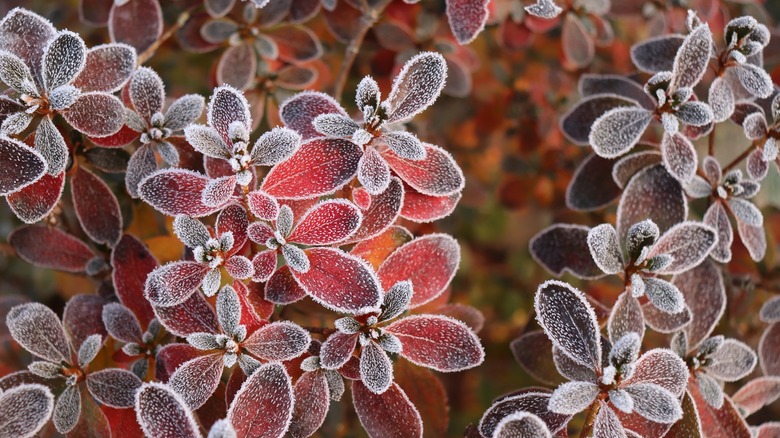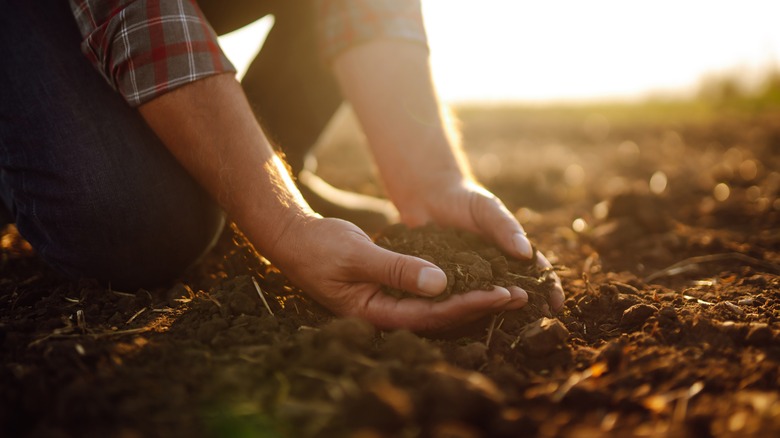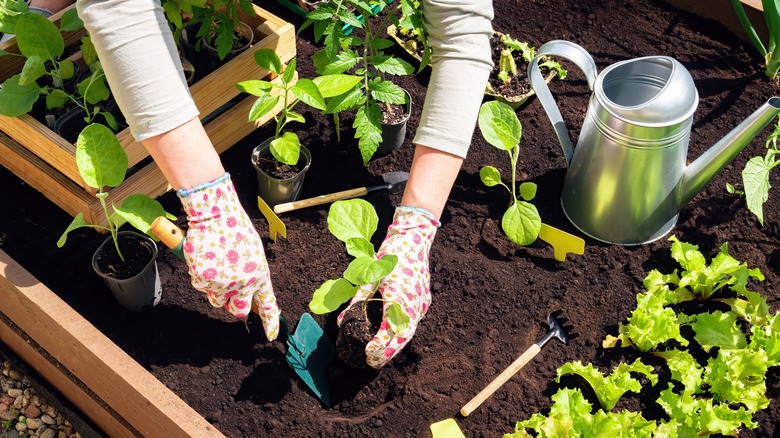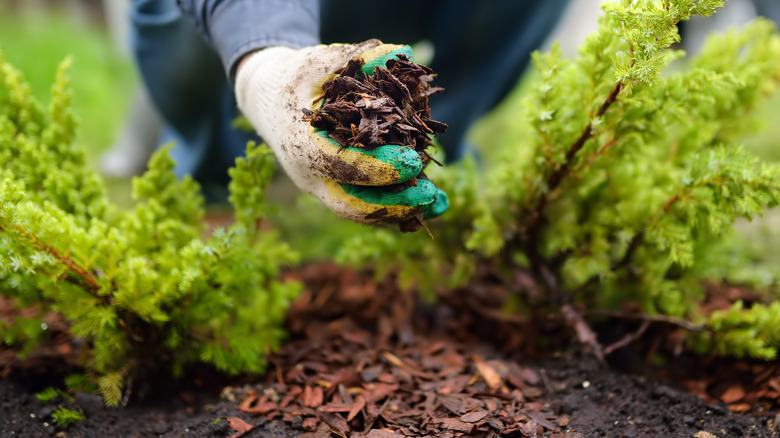How To Protect Perennials From Frost, According To A Gardening Expert
It's no small feat to plan, create, and continually tend to a garden. Different plants need different levels of sunlight and types of soil, which requires a lot of thought when determining what to plant and where in your yard. A key consideration if you live in an area with a lot of temperature variability is that certain plants are much hardier and able to withstand temperature swings while others are less likely to thrive in those conditions. Many plants don't come cheap, so you want to protect them as much as you're able to from any harsh weather.
For those who may not be familiar with the difference between annual and perennial plants, annuals live for only one growing season and perennials continually come back. "Perennials are an excellent garden investment because with good growing conditions they return from year to year," says Charlotte Ekker Wiggins, Master Gardener Emeritus and Founder of Gardening Charlotte. In fact, some perennial plants will last for decades if properly tended. The returning nature of these longstanding plants means you want to give them a little extra TLC to ensure they come back looking just as stunning each year. In an exclusive interview with House Digest, Ekker Wiggins shares some handy tips to keep any perennials you plant from being destroyed by the first frost of the year.
Select the right soil
If you're the type of gardener who uses the exact same soil throughout your garden without any consideration for the different plants you're cultivating, you may want to reevaluate that approach. According to Charlotte Ekker Wiggins, having the right soil can make a big difference in the longevity of your perennials. "Matching your plant to the soil type that will support them is critical for their growing success and kinder on your pocketbook. You won't lose so many plants," she explains.
While it may not be feasible to swap out the soil surrounding perennials you already have planted, if you're incorporating some new plants into your garden, start them off on the right foot by carefully selecting the soil they'll live best in or by finding perennial plants that will thrive in your garden's existing soil. "Make sure when they are first planted you are putting them in compatible soil conditions," advises Ekker Wiggins.
If you're not sure what you're working with, finding a solution is easy. "If you don't know your soil type, get a soil test done at your local extension office found through nearby universities. Cost is around $15 per test," recommends Ekker Wiggins. Considering the cost of plants, especially if you're filling a whole garden, you'll easily recoup that minor investment many times over.
Know the right depth when cultivating
So you've done a bit of research and know the perennials you're planning to incorporate in your garden are compatible with the soil you have — that's a great first step. However, it's easy to make an error in the planting process as well, which is where Ekker Wiggins' next tip comes in handy. It's not just as simple as getting the plants in the ground — a bit of measuring will be needed if you want your perennials to come back strong year after year. "When planting, place the perennials at the correct depth to protect roots. If in doubt, follow the plant depth in the pot you bought the plant," she suggests.
In the long run, finding the appropriate depth for planting is crucial to the longevity of your perennials, especially if they're going to face cooler weather conditions and frost. Ekker Wiggins continues, "Planting perennials too shallow will expose roots to cold and tend to kill the plant. If you go too deep, you may suffocate where plant growth starts." Keep the grow pots close at hand as you dig your holes to ensure that each hole is the proper depth. This way, you'll know your plants will be situated right in the sweet spot for their roots to thrive throughout the year.
Bring in the mulch for insulation
In addition to making sure they're set up properly from the beginning, a bit of ongoing maintenance is needed to effectively protect perennials against frost. You won't have to dig up the plants or anything as time-consuming as that — it's a matter of giving your plants a bit of a blanket, in a sense. "After the first hard frost, mulch around the base of the plant," recommends Ekker Wiggins. "You can use crumbled dead leaves, dry wood chips, or hay. The idea is to keep plant roots at a steady temperature." If your garden is in a dry or very sunny area, you may be familiar with mulch's ability to help soil retain moisture, but it's also an extremely beneficial intervention when battling frost. Ideally, you'll want to have some mulching materials on hand so you're ready to go whenever that first hard frost hits. As her suggestion of dead leaves illustrates, you can even repurpose debris from your yard to make the process convenient and cost-effective.
Unlike determining the appropriate soil or planting depth, mulching doesn't require many particulars. You want to distribute an even layer over the surface of the soil in order to shield the plants' roots from big variations caused by frost. "Fluctuating temperatures and moisture can shift plant roots out of the ground as soil expands and contracts," notes Ekker Wiggins. Keeping things as consistent as possible is key.



